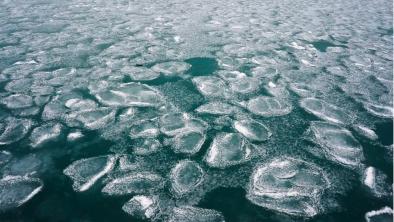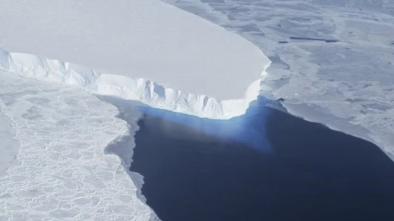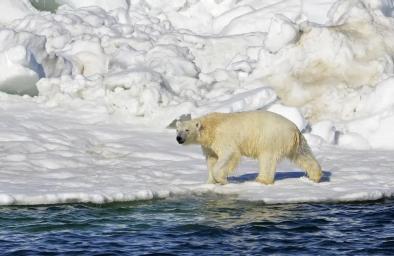Science Source
Attribution of Arctic Sea Ice Decline from 1953 to 2012 to Influences from Natural, Greenhouse Gas, and Anthropogenic Aerosol Forcing
- Presents results from a climate change detection and attribution study on the decline of Arctic sea ice extent in September for the 1953–2012 period
- Looks at three independently derived observational datasets and simulations for this period from multiple climate models to attribute observed changes in the sea ice extent to known climate forcings
- Directs attention to the combined cooling effect from other anthropogenic forcing agents (mainly aerosols), which has potentially masked a fraction of greenhouse gas–induced Arctic sea ice decline
- States that the presented detection and attribution framework consists of a regression model, namely, regularized optimal fingerprinting, where observations are regressed onto model-simulated climate response patterns (i.e., fingerprints)
- Shows that fingerprints from greenhouse gas, natural, and other anthropogenic forcings are detected in the three observed records of Arctic sea ice extent
- Beyond that, the findings indicate that for the 1953–2012 period roughly 23% of the greenhouse gas–induced negative sea ice trend has been offset by a weak positive sea ice trend attributable to other anthropogenic forcing
- Shows that the detection and attribution results remain robust in the presence of emerging nonstationary internal climate variability acting upon sea ice using a perfect model experiment and data from two large ensembles of climate simulations
Related Content
Science Source
| Nature
Regime shift in Arctic Ocean sea ice thickness
Headline

Feb 21, 2023 | Climate Nexus Hot News
Ice Absent From Great Lakes, New England
Headline

Feb 16, 2023 | Climate Nexus Hot News
Antarctic Sea Ice At Lowest Recorded Levels, Again; Thwaites Glacier's Weak Spots Getting Weaker
Headline

Jan 25, 2023 | Climate Nexus Hot News
Melting Sea Ice Could Increase Threatens Polar Bears, People


